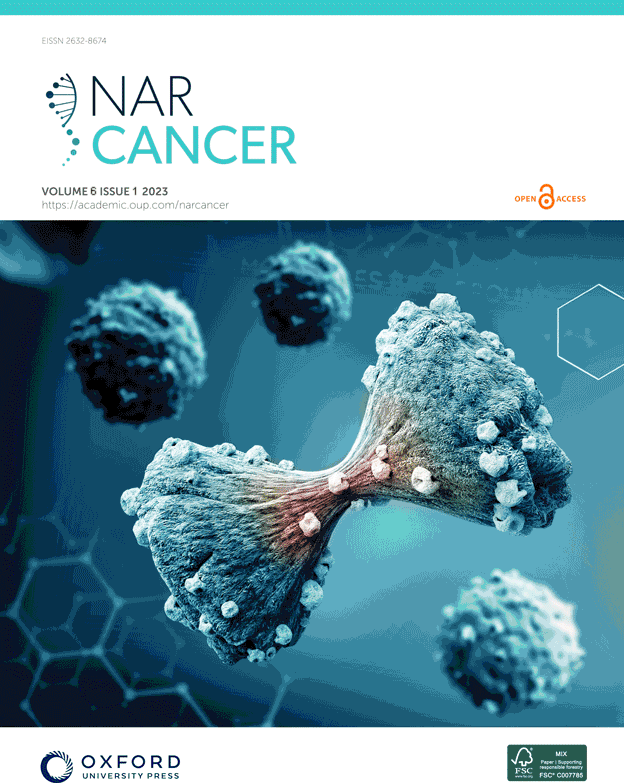The DNA Damage Response (DDR) landscape of endometrial cancer defines discrete disease subtypes and reveals therapeutic opportunities
IF 3.4
Q2 BIOCHEMISTRY & MOLECULAR BIOLOGY
引用次数: 0
Abstract
Abstract Genome maintenance is an enabling characteristic that allows neoplastic cells to tolerate the inherent stresses of tumorigenesis and evade therapy-induced genotoxicity. Neoplastic cells also deploy many mis-expressed germ cell proteins termed Cancer Testes Antigens (CTAs) to promote genome maintenance and survival. Here, we present the first comprehensive characterization of the DNA Damage Response (DDR) and CTA transcriptional landscapes of endometrial cancer in relation to conventional histological and molecular subtypes. We show endometrial serous carcinoma (ESC), an aggressive endometrial cancer subtype, is defined by gene expression signatures comprising members of the Replication Fork Protection Complex (RFPC) and Fanconi Anemia (FA) pathway and CTAs with mitotic functions. DDR and CTA-based profiling also defines a subset of highly aggressive endometrioid endometrial carcinomas (EEC) with poor clinical outcomes that share similar profiles to ESC yet have distinct characteristics based on conventional histological and genomic features. Using an unbiased CRISPR-based genetic screen and a candidate gene approach, we confirm that DDR and CTA genes that constitute the ESC and related EEC gene signatures are required for proliferation and therapy-resistance of cultured endometrial cancer cells. Our study validates the use of DDR and CTA-based tumor classifiers and reveals new vulnerabilities of aggressive endometrial cancer where none currently exist.子宫内膜癌的 DNA 损伤反应 (DDR) 情况定义了不同的疾病亚型,并揭示了治疗机会
摘要 基因组维护是一种使肿瘤细胞能够承受肿瘤发生过程中固有压力和逃避治疗诱导的基因毒性的有利特性。肿瘤细胞还利用许多被称为癌睾丸抗原(CTA)的错误表达的生殖细胞蛋白来促进基因组的维护和存活。在这里,我们首次全面描述了子宫内膜癌的 DNA 损伤反应(DDR)和 CTA 转录景观与传统组织学和分子亚型的关系。我们发现,子宫内膜浆液性癌(ESC)是一种侵袭性子宫内膜癌亚型,其基因表达特征包括复制叉保护复合物(RFPC)和范可尼贫血症(FA)通路成员以及具有有丝分裂功能的 CTA。基于 DDR 和 CTA 的特征分析还定义了临床效果不佳的高侵袭性子宫内膜样内膜癌 (EEC) 亚群,它们与 ESC 具有相似的特征,但根据传统的组织学和基因组特征,它们又具有不同的特征。利用基于 CRISPR 的无偏见基因筛选和候选基因方法,我们证实了构成 ESC 和相关 EEC 基因特征的 DDR 和 CTA 基因是培养的子宫内膜癌细胞增殖和耐药性所必需的。我们的研究验证了基于 DDR 和 CTA 的肿瘤分类器的使用,并揭示了目前尚不存在的侵袭性子宫内膜癌的新弱点。
本文章由计算机程序翻译,如有差异,请以英文原文为准。
求助全文
约1分钟内获得全文
求助全文

 求助内容:
求助内容: 应助结果提醒方式:
应助结果提醒方式:


